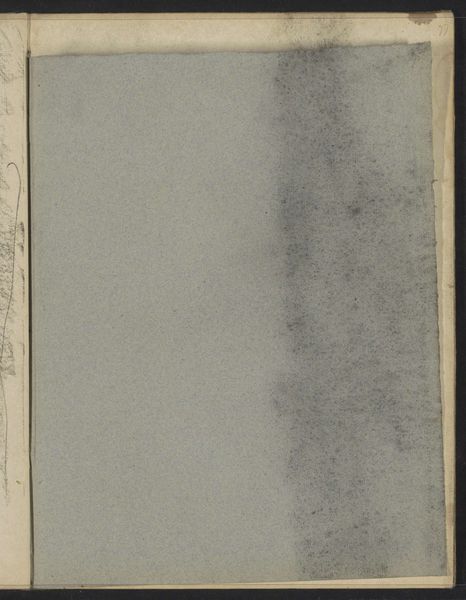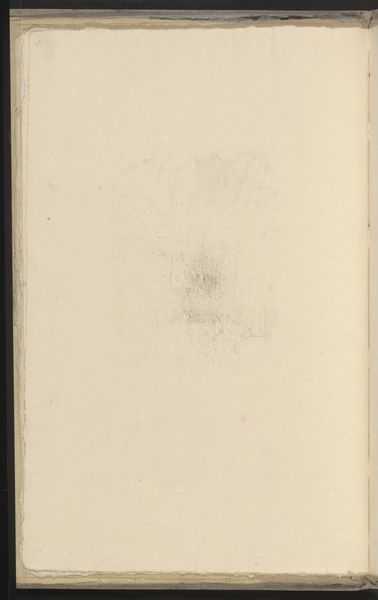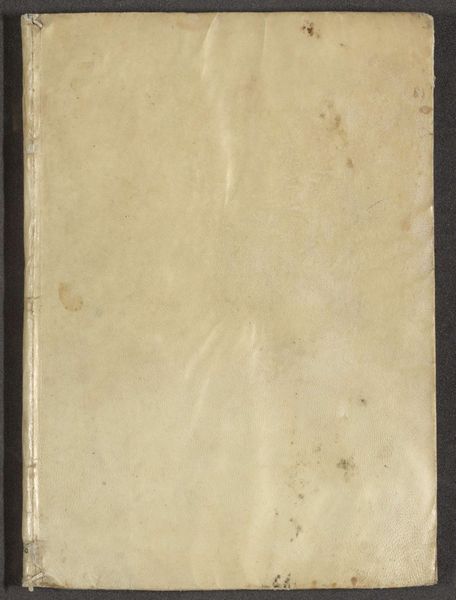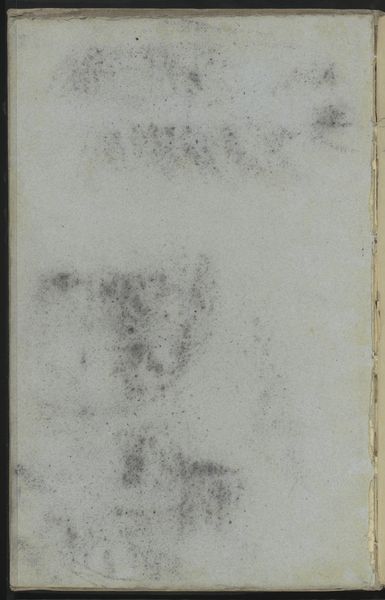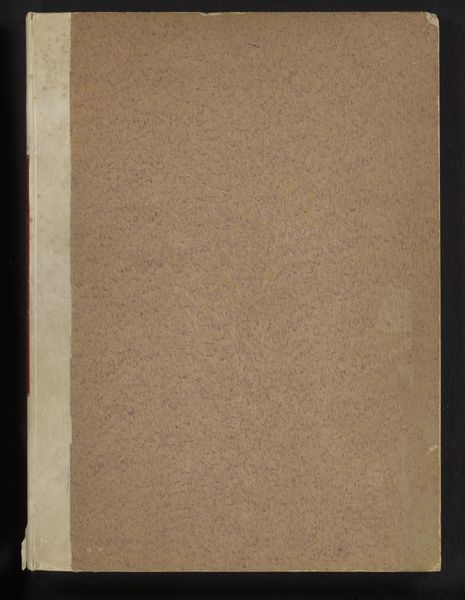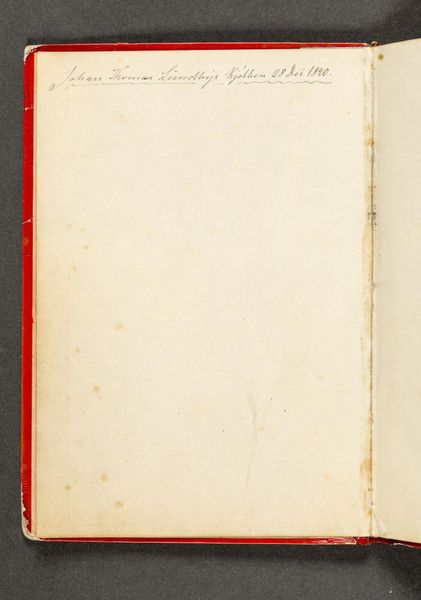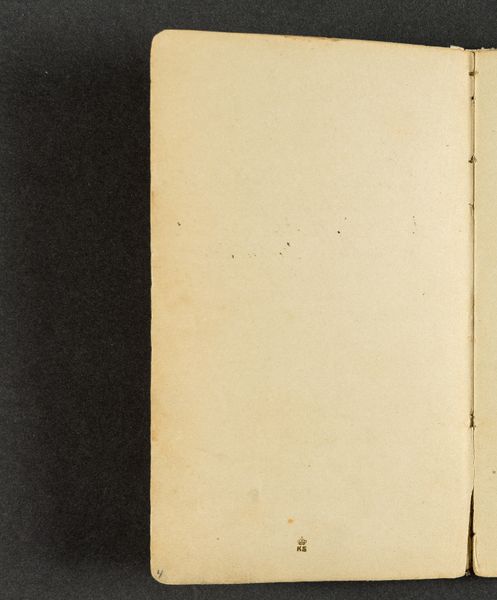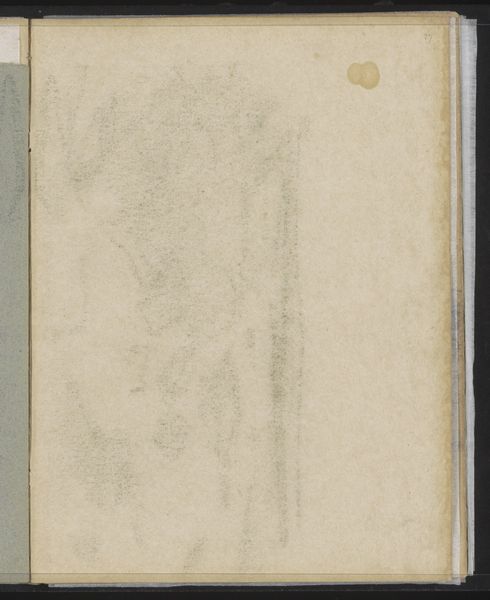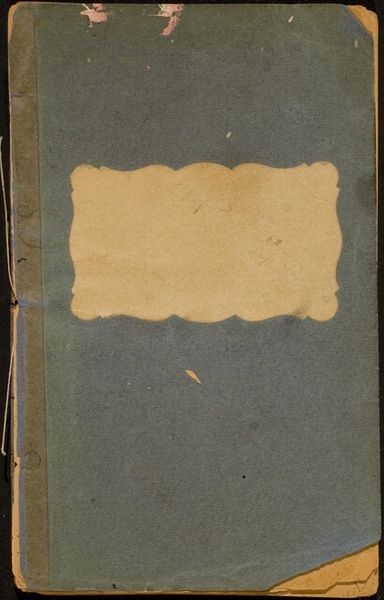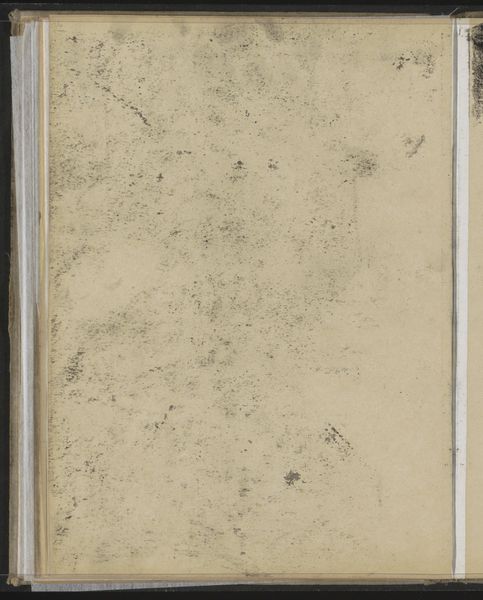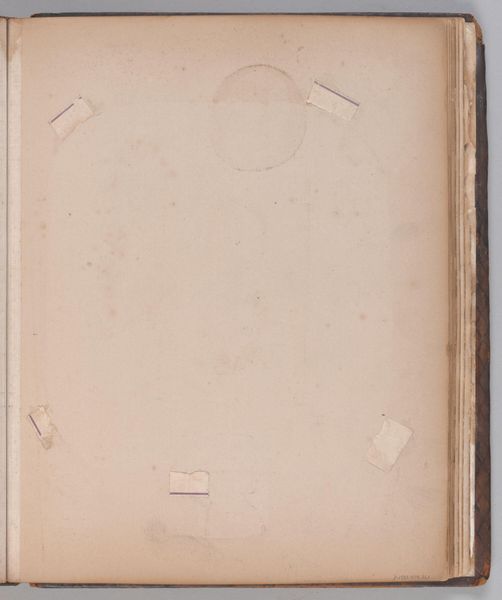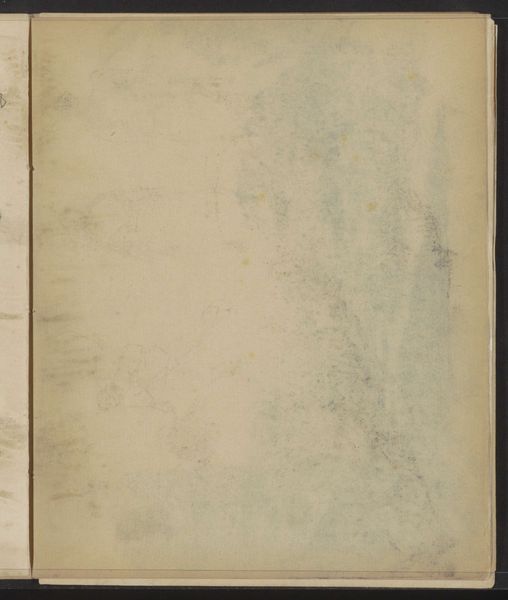
drawing, paper
#
portrait
#
drawing
#
landscape
#
paper
#
romanticism
Dimensions: 192 mm (height) x 133 mm (width) (bladmaal)
Curator: Today we're looking at "Forsats," a piece created by Johan Thomas Lundbye between 1840 and 1844, currently residing here at the SMK. It’s a drawing on paper. Editor: Immediately, it’s that creamy off-white page that gets me—a kind of blank canvas, waiting for something bold to happen. But it hasn't. It feels like a story’s just about to begin... Curator: Indeed. What's compelling is the tension between its ostensible emptiness and the materiality of the paper itself. Note the stains. The deliberate compositional elements reside in the visible texture and the structure of the paper itself—it invokes presence through absence. Editor: Like holding a really old map before the explorer marked it up. Those stains, like constellations or ancient civilizations…it's pregnant with possibilities! I like how raw it feels. Were there drawings on the pages bound within the covers? Curator: Potentially, although that aspect is less germane than understanding how Lundbye employed formal compositional awareness. The paper is, in essence, the artistic subject. By considering this in comparison with other works in Lundbye’s production we find him experimenting with figure ground relationships by use of purely compositional forms. Editor: You think? I keep seeing narratives embedded in that surface. Like I'm meant to discern faint sketches of long gone eras... Like it’s haunted, y'know? Full of past touches. Each splotch has a feeling, I suppose... melancholic! Curator: It is crucial, however, to look beyond any potential narrative elements to appreciate the fundamental structure. The slightly red endpapers act in dialogue to give visual emphasis and underscore its compositional dynamism. Editor: Alright, I get it, the bookend effect creates rhythm! I think, for me, it’s the imperfections that breathe life into what otherwise would be…well, an empty page. And those minor shifts draw our eyes through the space as we consider it more holistically, the color itself becomes quite complex. It’s strange, right? Curator: I agree, it is strange, yet perhaps beautifully so. This careful dance between what is and is not there encapsulates so many paradoxes. A fitting tribute to romanticism perhaps. Editor: Precisely, I felt the past’s long gaze.
Comments
No comments
Be the first to comment and join the conversation on the ultimate creative platform.
